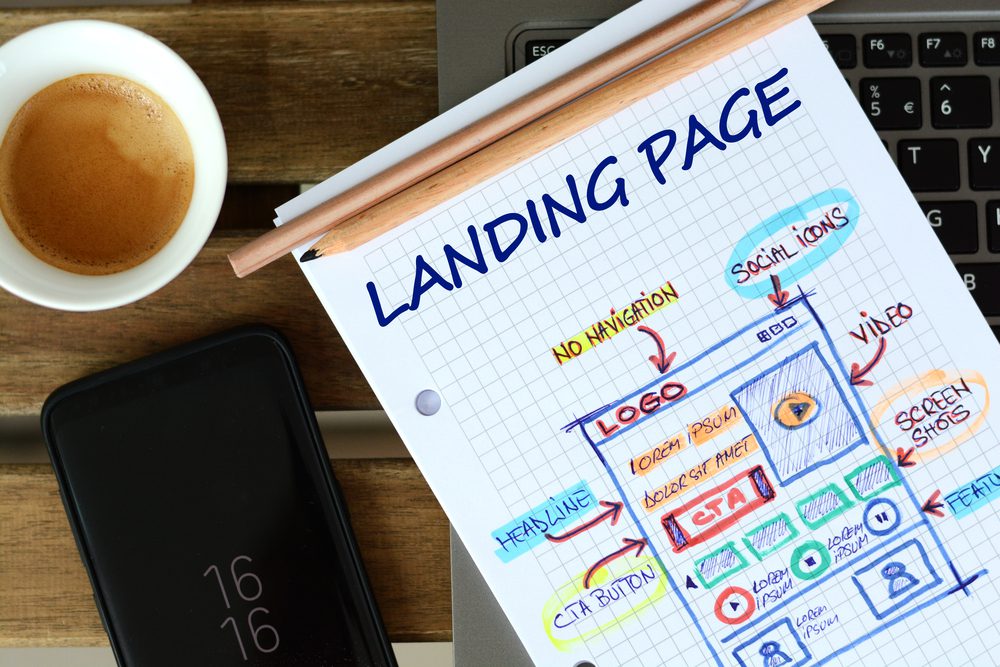
5 Elements of Landing Pages for Great Local Lead Generation
A local landing page is a stepping stone to conversion. To make it work, a Chicago lead generation agency combines marketing science, psychology, and visual design.
This article breaks down these three crucial factors into seven landing page elements:
- Deep understanding of the target audience.
- Application of market psychology principles.
- Strong headlines and subheadlines.
- Compelling calls to action (CTAs).
- Uncluttered, single-purpose landing page design.
- Benefits that align with the features.
- Local keyword optimization.
How does each contribute to your page’s success? Read the article below. Let’s go!
1. Deep Understanding of the Target Audience

Who is your market? The answer spells the difference between hitting or even surpassing your industry’s conversion rate and wasting money on online campaigns. It is the basis for the following:
- Customer segmentation.
- Landing page type.
- Keywords to target and use.
- Tone or language.
- Writing style.
- Selling proposition.
- Benefits and features to highlight.
- User problems or challenges to address.
For example, demos and white papers such as case studies are likely to appeal more to B2Bs because they provide in-depth insights, technical information, and real-world applications of products or services.
These resources help B2B professionals assess the practical value and suitability of a solution for their business needs.
Know your market well by:
- Researching your local competitors.
- Gathering feedback from existing customers through online surveys and questionnaires.
- Conducting interviews and focus groups.
- Engaging with your local audience through polls, comments, and direct messages on social media.
- Determining website traffic and behavior.
- Analyzing keywords for which you are ranking.
2. Application of Market Psychology Principles
What drives someone to sign up for the mailing list? When you analyze the answer further, you realize that it goes beyond getting the free ebook.
People make decisions based on many factors, from unconscious biases to motivations and emotions. You can capitalize on these innate characteristics by integrating marketing psychology principles into your local lead-generation copy.
Here are some to try:
| Marketing Principle | What It Means | How to Use It |
|---|---|---|
| Reciprocity | Leads are more likely to respond positively to your demands or directions when they get something in return. | Offer something valuable, such as an ebook or a webinar recording, in exchange for their email addresses. |
| Fear of missing out (FOMO) | Humans desire belongingness, as explained by Maslow’s hierarchy of needs. | Display real-time notifications of recent purchases made by other customers. Incorporate social proof, such as customer reviews. Extend exclusive or early access to products, services, or events for a select group of visitors. |
| Scarcity principle | People perceive items or opportunities as more valuable when they are limited in quantity or time. | Add deadlines for user action, limited-time offers, and low-stock indicators. |
| Framing and anchoring | Anchoring is a cognitive bias wherein people rely heavily on the first piece of information they receive when making decisions or judgments. Framing refers to how information is presented, significantly influencing people's perceptions. | A Chicago-based tour company could anchor a user’s perception of value by listing the original cost of a tour and then framing the discounted price as a special offer for city residents. |
3. Strong Headline

You cannot expect conversions or results from your landing pages unless you convince your audience to open them. The right headlines are powerful. How do you craft them? They should match these three criteria:
- Be specific, especially to the message, branding, and audience.
- Be attention-grabbing, attracting people to read the rest of the content.
- Contain action-prompting elements, leading users to take action.
- Center on value that perfectly describes what prospects can expect if they follow your directions.
Some of the best examples from popular brands include:
- Freshbook’s, “Accounting Made for You, the Non-Accountant.”
- Salesforce’s, ”Turn up Customer Satisfaction 45%, Turn on Service Cloud.”
- LinkedIn’s, “Talk to the Right People. Hire the Right People.”
- Slack’s, “Where Work Happens.”
- Airbnb’s, “Book Unique Places to Stay and Things to Do.”
Because headlines matter, take your time crafting them. Brainstorm with your team, consider five options, and then perform A/B testing to determine which drives the most response. Prioritize clarity and conciseness over cleverness, shock value, or humor.
4. Compelling Calls to Action (CTAs)
One of the most fascinating marketing stories involves the $300-million button. According to it, a company (believed to be Best Buy) hired a usability expert to reduce cart abandonment.
The expert discovered that the page initially had only two options: register an account or log in. Although they were not wrong, they also seemingly discriminated against those who did not want to build relationships with the brand.
The solution: a third choice labeled Continue as a Guest. It was game-changing because it empowered potential buyers. Now, they could either make a one-time purchase or sign up when they were ready.
This simple solution eventually increased the business’s revenue by $300 million in the first year of the button’s launch.
CTAs are just as essential as any other element on a landing page. It leads to a sale, a sign-up to a mailing list, or a demo schedule, bringing your prospects closer to becoming customers.
Make CTAs work with these tips:
- Be specific with your instructions. Instead of saying, “Click here,” use “Sign up to our newsletter,” “Download the ebook,” “Read our guide,” or “Book a demo.”
- Allow them to stand out. Place them above the fold (or around the first half of the webpage) so that they are visible even on mobile devices. Keep them close to your headline and use a different color from the surrounding elements, such as a blue box with white text.
- Add a value proposition or offer. A good example is “Sign up to receive updated Chicago news in your mailbox daily” or “Download our free SEO cheat sheet.”
5. Benefits That Align With the Features

How do people make decisions? One study suggested that we do it through evidence and confidence.
Spouting a long list of glorious product or service features is insufficient if you are a business owner or a marketer. You have to strengthen the lead’s confidence in taking action by pairing these features with benefits.
Suppose you are a Chicago real estate company specializing in residential properties for couples and starter families. Highlight your benefits without downplaying the features in this manner:
| Features | Benefits |
|---|---|
| Two- to three-bedroom houses with a spacious backyard | Experience the joy of ample living space, providing comfort and room to grow for your family. |
| Proximity to shopping centers, schools, and healthcare facilities | Enjoy a convenient lifestyle where your basic needs are accessible in less than 15 minutes by car. |
| Gated community | Rest easy knowing that you and your family are safe 24/7. |
| Starter home options | Choose your dream home according to your budget and needs. |
| Experienced real estate agents | Work with expert real estate agents who put your priorities first. |
Summing Up
Local landing pages for lead generation require several revisions, variation tests, and an understanding of human behavior. These five elements can get you started.
Work with Digital Authority Partners (DAP) for user-centric, results-driven content. As a top-tier lead generation agency in Chicago, we harness our knowledge and expertise in web and graphic design, branding, and content marketing to provide you with landing pages that convert.
Need proof? Contact us to learn about them.
Want To Meet Our Expert Team?
Book a meeting directly here




